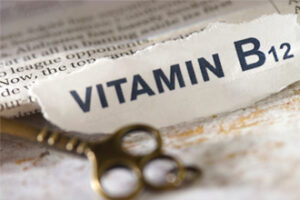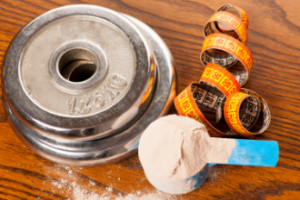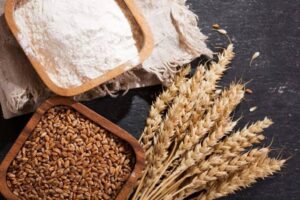Milk occupies a rather sacrosanct space in the Indian psyche than perhaps any other food.
Considered the perfect complete food for children, milk is celebrated, and the cow (from whom the milk is taken) revered as a mother.
Milk contains high amounts of calcium and is therefore great for bone health.
So much is the obsession around calcium that it is one of the most money spinning supplements around.
Let’s examine a few things beyond what we’ve been told and have come to believe.
Dairy came into human life only approximately 10,000-12,000 years ago when cows and goats were domesticated. Prior to that humans had never had dairy.
Yet bones and teeth of humans and animals found by archeologists from long before that, are strong and solid. No milk and the bones have lasted a millennia or longer.
How come their bones were so much stronger, and ours crumble within this lifetime despite milk and supplementation?
“The countries with the highest rates of osteoporosis are the ones where people drink the most milk and have the most calcium in their diets. The connection between calcium consumption and bone health is actually very weak and the connection between dairy consumption and bone health is almost non-existent.”
– Amy Lanou Ph.D., nutrition director for the Physicians Committee for Responsible Medicine in Washington, D.C.
The reason for calcium depletion in our bodies is because calcium is leached from our bones to neutralize acid. Acidic foods (meat, dairy, processed foods) and lifestyle (stress and anxiety) are what cause the depletion more than lack of calcium in our food.
Back in the day, when man transitioned from a nomadic, gatherer-hunter lifestyle to a settled existence, the whole point of this transition was to achieve food security. Milk from animals too was a part of that drive.
It has less to do with nutrition or improving bone health.
Let’s look at other nutrients we look for in milk, and what the real implication of these are.
- Protein. The two proteins found in milk are casein and whey.
Whey has been found to be absorbed quickly in the body and has been found to increase insulin resistance.
A lot of people are taking whey protein as a supplement these days and whereas it helps them build muscle, it also gives them constipation, indigestion, uric acid and kidney stones!
Casein is found to be extremely addictive and known to promote cancer growth.
Our body has an extremely difficult time breaking down casein.
This leads to major digestive stress, excess mucus production, respiratory problems and digestive problems like constipation, gas, bloating, and/or diarrhea, and also skin issues like acne, rashes, and redness or irritation.
To know more about the impact of casein on our body read The China Study.
- Hormones. Milk is a fluid for growth which is secreted by mothers for the growth of their children till they develop teeth and can be weaned off.
All milk contains growth hormones. In addition, cow’s milk these days also contains stress hormones (as the cow’s baby is taken away from her at birth, to be able to take the milk).
These hormones entering our system cause a complete hormonal havoc cause leading to – PCOD, hypothyroidism, infertility, diabetes, prostate and breast cancers.
These days cows are also injected with bovine growth hormones to stimulate more milk production. This equals more hormones in our body.
- Fat. Milk is full of saturated fat, the kind that our body does not need much of ; which has direct links with heart disease, diabetes and alzheimer’s disease.
So toxic is animal milk in our body that when we consume it, our body is forced to create more mucus (a slimy lining produced in our body) to protect our cells from it. Excess mucus formation leads to colds, coughs, asthma, respiratory illnesses and allergies.
What about Organic or A2 Milk ?
Organic or A2, you still will not escape the problems caused by hormones, whey and casein, the saturated fat and mucus formation, along with its acidic nature which is the real reason for calcium depletion in our body.
In case you are using regular dairy milk which is not organic, here’s what else to expect in your milk.
1. Pus. These days cows are milked through milking machines. This injures their soft and tender udders, causing pus formation and there is no way for this pus to be separated from the milk.
Also read more on pus in milk here.
2. Antibiotics. Cow’s milk these days has come a long way since it came into our diets. Cows are kept in unhygienic conditions and injected with antibiotics to prevent them from getting sick.
(Approximately 70-80% of antibiotics produced world wide are for farmed animals, and we get them through these animals).
3. Pesticides. Milk also has a high concentration of pesticides as an average cow eats 12 kilos of grain to produce 1 litre of milk. And dairy farmers cannot afford organic feed for their cows.
An ICMR (Indian Council of Medical Research) study found that milk in India on an average contains 570 times the permissible levels of residual pesticides.
It’s really simple to skip dairy and avoid all the problems it brings with it.
Start with trying these super easy alternatives right in your kitchen!
And let me know how it went!
Take the milk test. Know how much dairy you are consuming!
- Write down everything you eat the whole day (from the time you wake up to your last bite at night).
- Look at where dairy comes in. Milk, tea, coffee, butter, cheese, ghee, paneer, cream, ice cream, chocolate. Also check your biscuits, bread and snack packets if milk or milk solids are mentioned in the ingredients.
How much dairy are you consuming daily? Any surprises here?
When I took this test about 9 years ago (when I was transitioning to a vegan) I was surprised to find that I was having a lot more dairy than I thought I was!!!
 EAT PLANTS
EAT PLANTS MOVE DAILY
MOVE DAILY SLEEP MORE
SLEEP MORE



